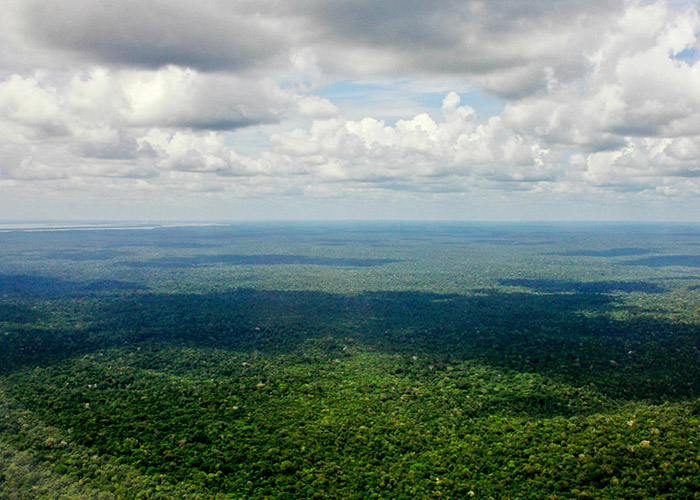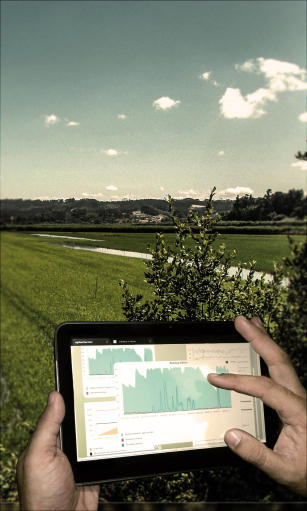Notícias
Soybean moratorium's impact in reducing deforestation is higher than estimated
Mapping performed by the University of Kansas, in the United States, in partnership with Embrapa, Brazil, has proven that the soy moratorium has decisively contributed to reducing deforestation in the Brazilian state of Mato Grosso. Research with data mapped between 2001 and 2014 have shown that there was a fall in the cultivation of soybeans in newly-deforested areas by a factor of 2.4. The average conversion rate fell from 9.4% to 3.9% in the periods five year before and after the moratorium.
The data are presented in the paper Soy moratorium impacts on soybean and deforestation dynamics in Mato Grosso, Brazil, published in the journal Plos One, in late April. The authors are the University of Kansas researchers Jude H. Kastens, J. Christopher Brown and Christopher R. Bishop, in partnership with Alexandre Camargo Coutinho and Júlio César Dalla Mora Esquerdo, from Embrapa Agricultural Informatics.
“Based on our analysis, we found a much stronger deforestation decline coincident with the Soy Moratorium than other studies have reported”, stated Kastens to the University of Kansas' KU Today newsletter. “The Soy Moratorium has been downplayed in some research as a factor in deforestation reduction. Our examination of essentially the same deforestation dataset used by others revealed a major decline in deforestation occurred immediately after the moratorium took effect. Deforestation is still happening, but it has slowed, and less of this land is being used for soy production”, stressed the researcher.
The analyses show that historical deforestation in Mato Grosso was reduced five times after the moratorium. The study assessed the dynamics of the activity in the region between 2001 and 2014, and the maps it generated identify where agricultural intensification has taken place. “They are producing more, despite no major gains in planted area. Both the intensively collected field data and the produced maps numerically and spatially demonstrate this fact”, the researcher Júlio Esquerdo explains.
According to the Project for the Satellite Monitoring of Deforestation in the Brazilian Amazon (Prodes), by Brazil’s National Institute for Space Research (Inpe), between 2001 and 2006, the annual average deforestation rate in the state was of 1,028,779 hectares per year. With the establishment of the moratorium in 2006, restricting the soybean trade to non-deforested areas, the figure fell to 180,694 hectares per year. According to the paper, in the period analyzed five year before the moratorium, about 14% of deforested areas were taken up by soybean crops. After the ban, the indicator fell to 5.6%.
The study mapped annual agriculture in the state, which mostly comprises soybean, maize and cotton, based on satellite images and remote sensing techniques. Besides the data collected from the field in about 3,000 sample locations, in several trips made by the team, soybean and cotton data were compared with the ones publicized by the Brazilian Institute of Geography and Statistics (IBGE).
“For the first time, this type of analysis was promoted with mapping that was specific to soybean crops, and the results have shown a higher impact of the soy moratorium in reducing deforestation in comparison with previous studies”, reports the researcher Alexander Coutinho. He also underscores the study's considerable repercussion abroad, especially due to information sharing. Both the maps and the data cited in the scientific article are available online with the aim of contributing to the work of managers and public-policy makers in Brazil.
Agricultural intensification
With the broad mapping in Mato Grosso state, the team identified that, especially after the soy moratorium, strong agricultural intensification occurred in the region, that is, farmers started to produce more thanks to the adoption of technology. Cotton, maize and soybean production, which totalled 12.8 million tons in 2001, grew to 46.9 million in 2014, according to IBGE.
However, this increment in production did not apply to planted areas to the same extent. What happened was a change in agricultural dynamics through double cropping, that is, with two crops produced in the same harvest year. To give an idea of such change, in 2001 there were 3,289 square kilometers (km2) with soybean plantations intercropped with maize, cotton and sorghum. In 2014, such figure grew to 43,843 km2, which represents an increase by a factor of 13 times. Cotton was the one of the crops whose planted area expanded during the second harvest after soybean's, moving from 110 km2 in 2001 to 5,383 km2 in 2014, while cotton sowing during the main harvest was reduced from 3,013 km2 to 466 km2 in the same period.
Another aspect that is worth noting is the development of shorter cycle soybean cultivars as one of the measures to control Asian soybean rust, a disease caused by the fungus Phakopsora pachyrhizie, that was identified for the first time in Brazil in 2001 and has caused major damages in Brazilian agriculture. “The early soybean varieties make it possible to integrate the crop with cotton in same harvest year. They are important, extremely technically-resourced agricultural commodities, which have had major productivity increases in the state”, Alexander Coutinho declares.
The expansion of such crop areas did not significantly occur in forest areas. However, there is evidence that soybean plantations are migrating to other places, with impact in other biomes, as is the case of the Matopiba region - an area that comprises part of the Brazilian states of Maranhão, Tocantins, Piauí and Bahia and new agricultural frontier in the Cerrado biome -, in which agriculture is based on modern high productivity technologies. That is why the researchers warn that it is necessary to establish more advanced agricultural monitoring mechanisms, including the grain traceability, in addition to the implementation of new control actions that help sustainable production.
The identification of agricultural intensification or expansion processes is the main goal of the technical cooperation agreement that Embrapa established with the University of Kansas nearly ten years ago. As a result of this agreement, the teams developed several field data collection methodologies to map agricultural crops within different research projects, such as TerraClass Amazônia, Mapagri (Methodology for mapping agricultural activity in Brazil) and Intagro (Agricultural intensification and agricultural commodities in Brazil: territoriality, sustainability and competitiveness).
Moratorium
The soy moratorium is a commitment pledged by representatives of the industry, civil society and the Brazilian government created in 2006. This instrument forbids the trade, acquisition and financing of grains produced in illegally deforested areas in the Amazon biome, in areas embargoed by the Brazilian Institute of Environment and Renewable Natural Resources (Ibama), and in properties that are blacklisted as employing slave-like labor by the Ministry of Labor and Social Welfare. Through the moratorium, the Brazilian Association of Plant Oil Industries (Abiove) and the Brazilian Association of Cereal Exporters (Anec), which buy grains in Brazil, commit to not investing in soybean producers that use Amazonian Forest areas.
Read the full paper:
Jude H. Kastens et al. Soy moratorium impacts on soybean and deforestation dynamics in Mato Grosso, Brazil, PLOS ONE (2017).
Translation: Mariana Medeiros
Nadir Rodrigues (MTb 26.948/SP)
Embrapa Agricultural Informatics
informatica-agropecuaria.imprensa@embrapa.br
Phone number: +55 19 3211-5747
Collaboration: Giovanna Abbá
Embrapa Agricultural Informatics
Further information on the topic
Citizen Attention Service (SAC)
www.embrapa.br/contact-us/sac/


